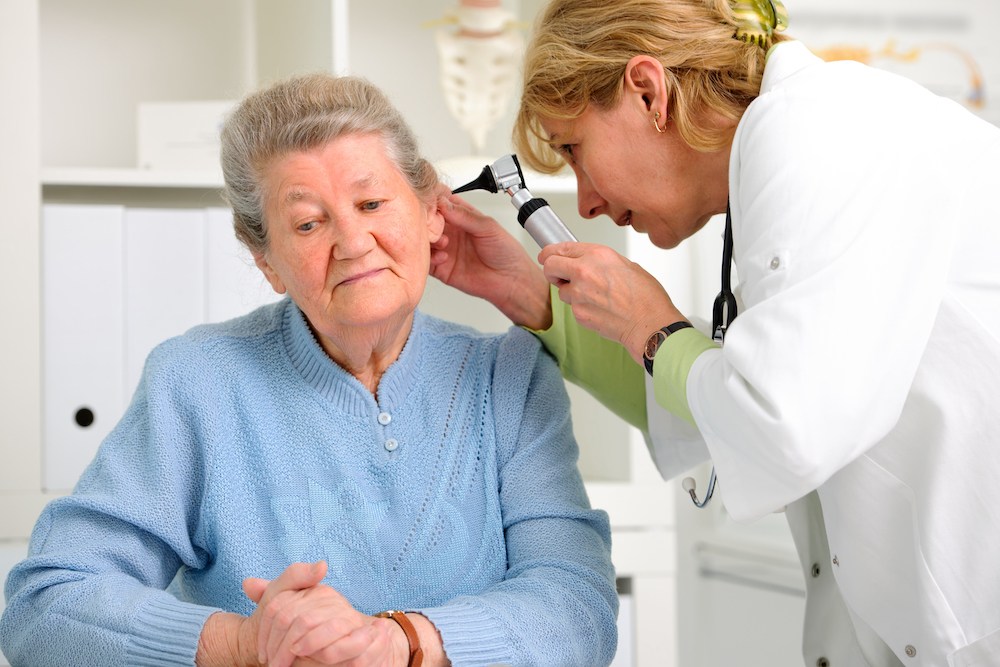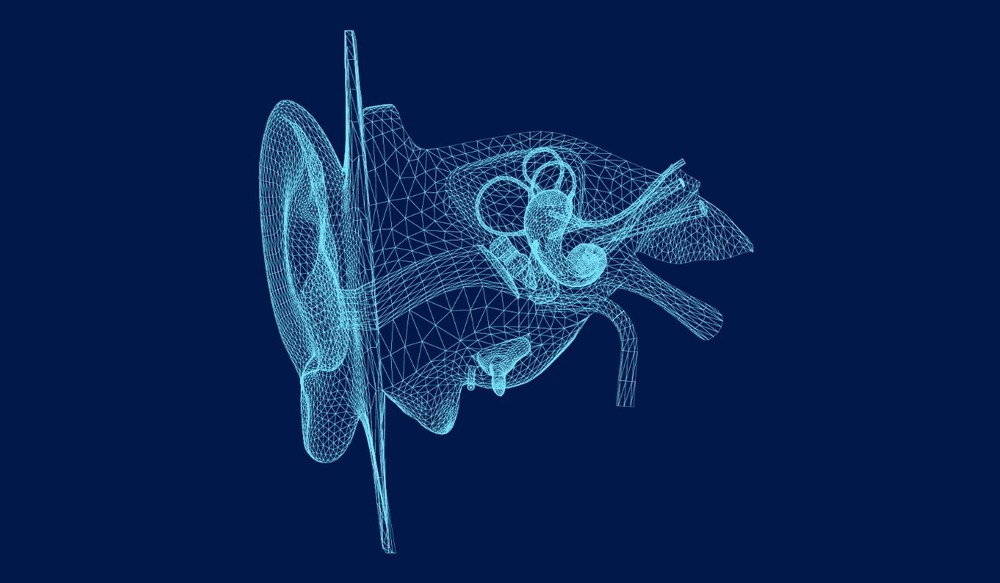The Connection Between Hearing Loss and Physical Activity
Staying physically active supports your overall health in ways that go far

By: admin | September 25, 2024
Managing hearing loss can feel overwhelming, but you’re not facing it alone. There are a variety of options designed to help you reconnect with the sounds you love. One development gaining attention is the rise of over-the-counter (OTC) hearing aids. These devices offer a more accessible alternative for those with milder hearing loss, providing an affordable and convenient way to address hearing challenges without a prescription. While they aren’t customized like traditional prescription devices, OTC hearing aids still offer valuable support for those seeking an entry-level solution. As you explore these options, remember that there are multiple paths to improving your hearing and enriching your daily experiences.
OTC hearing aids are devices designed for adults with self-perceived, mild-to-moderate hearing loss. Unlike traditional hearing aids, OTC devices can be purchased directly from a store or online without needing a prescription or professional fitting. They offer a convenient and cost-effective solution for those looking to address hearing challenges on their own terms.
OTC hearing aids are self-fitted, meaning that wearers can adjust the settings themselves to suit their individual needs. While they may not offer the same level of customization as prescription hearing aids, they still provide an effective way to improve sound clarity and communication in everyday situations. These devices can serve as an entry point for people who are beginning to notice hearing loss but aren’t ready for or don’t require more advanced, prescription options.
Over-the-counter (OTC) hearing aids received FDA approval in August 2022, representing a significant step towards enhancing access to hearing care. This approval came after extensive advocacy, research, and legislative efforts aimed at providing accessible hearing solutions for individuals with mild-to-moderate hearing loss. The push for OTC hearing aids was driven by the Over-the-Counter Hearing Aid Act of 2017, which instructed the FDA to create regulations for hearing aids that could be sold directly to consumers without a prescription or professional fitting.
Previously, while effective, traditional hearing aids required visits to hearing specialists, which could be a barrier for some people. The Over-the-Counter Hearing Aid Act aimed to simplify the process by allowing a new category of hearing aids to be sold over the counter. The FDA’s final rule, issued in 2022, established guidelines for the design, safety, and sale of these devices. With OTC hearing aids becoming available in October 2022, millions of Americans now have greater opportunities to manage their hearing loss independently. These regulations ensure OTC hearing aids meet essential standards for safety and effectiveness and provide consumers with more control over their hearing health, including limits on sound output to prevent excessive volume and clear labeling to aid in informed decision-making.
The FDA plays a critical role in regulating medical devices to ensure they are safe and effective for public use. Medical devices, which range from simple items like bandages to complex technologies like pacemakers, are categorized by the FDA based on their potential risks. The agency divides these devices into three classes – Class I, Class II and Class III – each with different regulatory controls depending on the device’s intended use and risk level.
Class I devices, such as tongue depressors or bandages, are considered low-risk and are subject to the least regulatory oversight. Most Class I devices are exempt from premarket notification, meaning manufacturers don’t need to submit an application to the FDA before marketing the product. However, they still need to adhere to general controls, which include proper labeling, manufacturing standards and registration with the FDA.
Class II devices, such as hearing aids or pregnancy tests, present a moderate risk. These devices require greater regulatory oversight and often need to undergo a premarket notification process, known as the 510(k) submission. In this process, manufacturers must demonstrate that their device is substantially equivalent to an already approved device on the market. Class II devices are also subject to both general and special controls, which may include performance standards, post-market surveillance and additional labeling requirements.
Class III devices, which are high-risk and often life-supporting or life-sustaining, such as pacemakers or heart valves, require the most rigorous oversight. These devices must undergo a premarket approval (PMA) process, where manufacturers must provide substantial evidence of the device’s safety and effectiveness through clinical trials. The FDA thoroughly reviews all data before allowing the device to be marketed.
In addition to these classifications, the FDA also monitors medical devices after they have been approved and are available to the public. Through post-market surveillance, the FDA ensures ongoing safety by collecting reports of adverse events, monitoring recalls and requiring additional studies if necessary. This comprehensive regulatory system helps maintain public trust by ensuring that medical devices meet stringent safety and performance standards before reaching consumers.
When it comes to regulating OTC hearing aids, the FDA considers several key factors to ensure both safety and effectiveness. The regulations address aspects like sound output limits, labeling requirements and sales guidelines to protect consumers while providing greater access to hearing aids. These rules govern the design, marketing and distribution of OTC hearing aids, aiming to balance accessibility with the need for reliable and safe hearing solutions.
One of the primary regulations limits the maximum sound output of OTC hearing aids to prevent potential hearing damage. This ensures that even though these devices are sold without a prescription or professional fitting, they will not emit harmful levels of sound. Additionally, the FDA requires that OTC hearing aids meet specific safety standards to ensure they function properly and provide reliable hearing support.
Another key regulation focuses on labeling. OTC hearing aids must have clear, easy-to-understand packaging that provides essential information, like instructions for use, details on the type of hearing loss they are intended for and any potential risks. This is intended to help consumers make informed decisions about whether the device is appropriate for their hearing needs. The packaging must also state that the devices are intended for adults, as the OTC hearing aids are not suitable for children or individuals with severe hearing loss.
The FDA regulations also allow OTC hearing aids to be sold directly to consumers through various retail channels, including online and in physical stores, without the need for a medical exam or hearing test. However, the regulations encourage consumers to consult a healthcare provider if they experience more serious hearing issues or if OTC aids do not provide sufficient improvement.
Prescription hearing aids are designed specifically for your hearing needs, based on an in-depth evaluation by an audiologist. Unlike over-the-counter models, these devices are customized following a detailed hearing assessment, ensuring they deliver precise amplification tailored to your unique hearing profile.
These hearing aids come in various styles, including behind-the-ear (BTE), in-the-ear (ITE) and in-the-canal (ITC) models, each offering different features like advanced noise reduction, directional microphones and Bluetooth connectivity. The audiologist programs the hearing aids to align with your specific hearing loss, optimizing sound quality and clarity for your daily activities.
The process begins with a thorough consultation where the audiologist evaluates your hearing and discusses your lifestyle needs. Based on this assessment, they recommend the most suitable hearing aid and adjust it to ensure a comfortable fit and effective performance. Regular follow-up appointments are part of the service, allowing for ongoing adjustments and fine-tuning to ensure your hearing aids continue to meet your needs over time. This comprehensive approach provides a reliable and personalized solution for enhancing your hearing experience.
These devices are designed to boost environmental sounds for individuals who may need a little extra auditory assistance but do not have a diagnosed hearing loss. These products are generally marketed as tools for enhancing hearing in everyday situations, like conversations with friends or watching television. However, PSAPs are not regulated by the FDA and lack the customization and professional fitting associated with hearing aids.
Unlike hearing aids, which are tailored to address specific hearing loss through precise adjustments and programming by an audiologist, PSAPs provide a one-size-fits-all solution. They amplify all sounds equally, which can lead to discomfort or distortion for wearers with hearing impairments. This lack of customization means that PSAPs may not effectively address the needs of those with significant hearing loss and can sometimes provide a subpar hearing experience.
Because PSAPs are readily available and often less expensive, they may cause individuals to delay seeking professional help for their hearing issues. People might assume that these devices are a sufficient solution, leading them to postpone getting a proper hearing assessment and customized hearing aids. This delay can impact their overall hearing health and create a negative perception of hearing devices, as individuals may feel disappointed if PSAPs do not meet their expectations or adequately address their hearing challenges.
When deciding between OTC and prescription hearing aids, it’s essential to consider your specific hearing needs and preferences. OTC hearing aids offer a convenient and accessible option for those who may have mild to moderate hearing loss. They can be purchased without a prescription and adjusted by the wearer, making them a more budget-friendly choice for immediate hearing enhancement.
On the other hand, prescription hearing aids, provided by an audiologist, are generally considered a more tailored solution. These devices are custom-fitted and programmed based on a comprehensive hearing evaluation, ensuring that they precisely address your unique hearing loss. Prescription hearing aids often feature advanced technologies, like adaptive noise reduction, tinnitus masking, artificial intelligence and personalized settings, which can significantly improve your listening experience.
Consulting with an audiologist is highly recommended to accurately assess your hearing loss and determine the most suitable hearing aid for your needs. An audiologist will perform a detailed hearing evaluation, recommend the best hearing aid options and provide ongoing support to ensure that your devices are optimized for your hearing health. Regardless of whether you choose OTC or prescription hearing aids, professional guidance is crucial for achieving the best results and ensuring that your hearing aids effectively meet your expectations.
Thanks to the evolution of hearing aid technology, you’ve got a plethora of different options available to correct your hearing loss. The first step starts when you make an appointment with an audiologist to get to the bottom of your auditory health. At Big Thicket Hearing Aids & Audiology in Lumberton, Texas, we understand that every person’s hearing needs are unique. That’s why we’re happy to discuss all your options in full detail to ensure you get the right technology for your specific needs. We invite you to contact us at (409) 751-2590 for more information or to schedule a consultation with one of our team members.

Staying physically active supports your overall health in ways that go far
By: admin | October 20, 2025

If you’re a musician, you’re in a tough spot when it comes to
By: admin | September 24, 2025

Hearing loss affects millions of people worldwide, yet remains largely
By: admin | May 23, 2025
